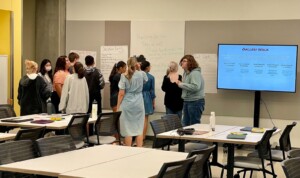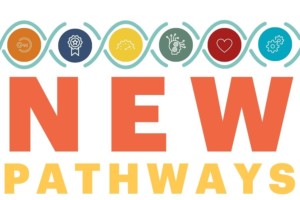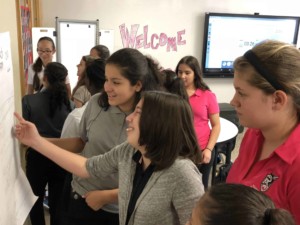It’s Coming… Taleblazer is The New SCRATCH

Last week at the Serious Play Conference, I got a sneak peak at Taleblazer, an awesome new tool for students coming this fall from MIT Step, the same labs that created SCRATCH– the block based programming platform that allows kids to make video games, animated stories and digital art.
Taleblazer is a brand new web based platform that allows students to create location based, augmented reality games that can actually be played on mobile devices.
How it works:
-
Students will use blocks-based scripting just like SCRATCH – to help learn programming without having to worry about typos.
-
Students will learn how to layer the game data directly over actual maps they choose, either by using Google Maps, live, or custom maps they create and download into the program.
-
The games take on a “choose your own adventure” format, allowing for creativity and critical thinking from not only the players, but from the game creators.
-
TaleBlazer Game Maker will be completely web-based – so just turn on the computer and go, any student with access to the internet can use it, no downloading required!
-
Games go to the cloud and then can be downloaded to smartphone – Players will have instant access to all the games stored in the Taleblazer library and can play from any iOS or Android smartphone with GPS.
While listening to Judy Perry, Ed.M. from MIT describe all the capabilities of this new program they are just about ready to launch for all schools, I immediately felt my eyes get wide. This is going to be huge! Students are going to consume this tool and create things we can’t even imagine! Here’s what ran through my head:
Lets students hack. Just like SCRATCH, Taleblazer will give students the “building blocks” but the end result is unscripted. SCRATCH, for my students, were the legos of the internet. At first they built very simple “structures.” They were thrilled when they saw the cat walk a few steps and then turn left. That didn’t last long. They experiment and added more blocks in the right places and their “structures” became bigger, stronger and, definitely, more interesting! Soon, it wasn’t about the cat- they were creating games and digital art projects mirroring their own interests. Taleblazer definitely continues this theme, letting students “hack” whatever game they imagine.
Combine stories with geography. I love that these games combine augmented reality with GPS, inviting students to think about their sense of place. Game creation starts with a map that they can research and customize through the Google Maps interface. Students can create games about places they are familiar with or, maybe, even create a game in a completely foreign land that they someday hope to visit. Either way, students are focusing on fitting their ideas and learning into real geographic space.
Project based learning. Taleblazer will be perfect for any classroom using project based learning! The more research and collaboration that goes into creating a game on this platform the better. And Taleblazer is so intuitive, the success of the game becomes more about the quality of the content and less about the specifics of programming. Students will need to use geography, writing, math, and art skills, just to name a few, as well as will as critical and predictive thinking skills to create a truly successful Taleblazer game.
Flatten classroom walls. Because these games are about geography, what a fun opportunity to connect with other students all over the world. Using skype or Google hangouts, students could work in teams with others in classrooms across the globe to build for or with each other. I love that the game library is hosted on the web, so truly there are no boundaries for sharing the games students create!
Immerse students in the learning. Augmented Reality helps put the learner “inside” the game, immersing them in the learning- making it more impactful. Taleblazer successfully immerses both the game maker and the game player, creating deeper learning for all involved. This type of program definitely makes “tech” the tool and the “real life,” physical experience is where the learning happens.
The possibilities are endless. Just like with SCRATCH, the possibilities and depth can’t truly be predicted until our students really dig into it! I have no doubt our little digital natives have plans for these games that our brains can’t even imagine. Can’t wait to see what they come up with!
Don’t forget to sign up for the announcement– for your students’ sake, you won’t want to miss when MIT officially launches Taleblazer.







0 Comments
Leave a Comment
Your email address will not be published. All fields are required.